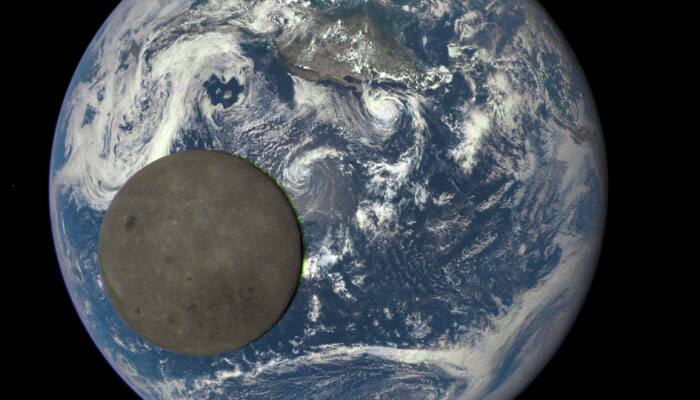Washington: From a million miles away, a NASA camera aboard the Deep Space Climate Observatory (DSCOVR) satellite captured a stunning view of the moon as it moved in front of the sunlit side of Earth last month.
The series of test images shows the fully illuminated “dark side” of the moon that is never visible from Earth.
The lunar far side lacks the large and dark basaltic plains (called maria) that are so prominent on the Earth-facing side.
A thin sliver of shadowed area of moon is visible on its right side.
"It is surprising how much brighter Earth is than the moon. Our planet is a truly brilliant object in dark space compared to the lunar surface,” said said Adam Szabo, project scientist at NASA's Goddard Space Flight Center in Greenbelt, Maryland.
The images were captured by NASA’s Earth Polychromatic Imaging Camera (EPIC), a four megapixel CCD camera and telescope on the DSCOVR satellite orbiting 1 million miles (1.6 lakh km) from Earth.
Watch the video below:
Video credit: NASA/YouTube
According to NASA, these images were taken between 3:50 p.m. and 8:45 p.m. EDT on July 16, showing the moon moving over the Pacific Ocean near North America. The North Pole is in the upper left corner of the image, reflecting the orbital tilt of Earth from the vantage point of the spacecraft.
EPIC maintains a constant view of the fully-illuminated Earth as it rotates, providing scientific observations of ozone, vegetation, cloud height and aerosols in the atmosphere.
The far side of the moon was not seen until 1959 when the Soviet Luna 3 spacecraft returned the first images.
Since then, several NASA missions have imaged the lunar far side in great detail.
The same side of the moon always faces an earthbound observer because the moon is tidally locked to Earth.
That means its orbital period is the same as its rotation around its axis.
Once EPIC begins regular observations next month, NASA will post daily colour images of Earth to a dedicated public website.
About twice a year, the camera will capture the moon and Earth together as the orbit of DSCOVR crosses the orbital plane of the moon.
DSCOVR is a partnership between NASA, NOAA and the US Air Force with the primary objective of maintaining the nation’s real-time solar wind monitoring capabilities, which are critical to the accuracy and lead time of space weather alerts and forecasts from NOAA.
(With Agency inputs)
















